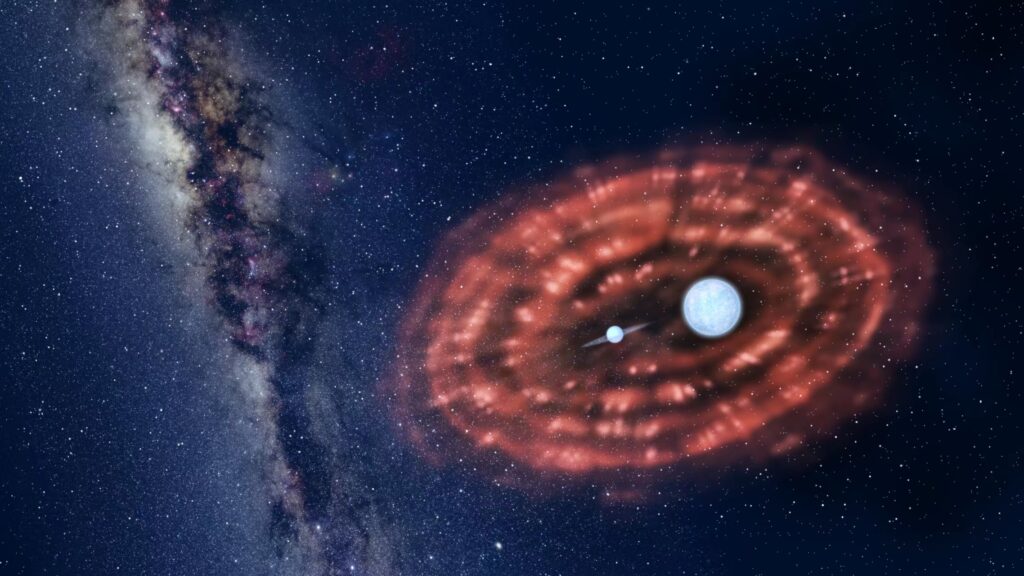Chinese and Australian astronomers have jointly discovered a binary system that has just experienced a common envelope ejection, the first time in history to have found direct observational evidence for the key process of common envelope evolution, said a study published at a peer-reviewed scientific journal on Thursday, the Global Times learned from the Yunnan Observatories of Chinese Academy of Sciences (YNO).
The groundbreaking discovery is believed to open up a new chapter for scientists to accurately characterize this important process of common envelope evolution of binary systems through astronomical observations.
The study, co-led by Han Zhanwen with the Yunnan Observatories and Chris Wolf with the Australian National University, has been published on the Monthly Notices of the Royal Astronomical Society.
It said the envelope is leaving the binary system at a velocity of about 200 kilometers per second.
Binary systems in the universe account for more than half of all the stars, and they exist in mutual orbits under gravity. One very important process in binary evolution is called common envelope evolution, which profoundly affects the outcome of binary evolution, Zhao Gang, a research fellow at the National Astronomical Observatories of Chinese Academy of Sciences, explained.
Common envelopes were first postulated in 1976, and have been widely used as the explanation for the formation of double black holes, double neutron stars, double white dwarfs and many other compact binaries. However, until this day, a common envelope has never been seen yet, which has made it difficult to understand the physical processes that actually occurred during this evolutionary phase.
“The latest study of the binary system, which has just completed a common envelope ejection, is the very link that has been missing from the observations,” Zhao said, noting that it is a groundbreaking discovery from zero to one, which has made it possible to study the formation and evolution of close binary systems by restoring their early physical status.
“The significance of this discovery is that it turns a theoretical idea into reality. Scientists have not only seen the first observational evidence of the evolution of a common envelope of binary systems, but they have also been able to accurately characterize this key process through observations. This is a milestone discovery in the field, where scientists have previously been able to describe the process only in broad terms, without precise numerical simulations and without direct observational evidence,” said the statement YNO sent to the Global Times.
“It is great to see this collaboration between Australian and Chinese Astronomers yield such an exciting result. I am pleased to have visited China many times and witnessed the growth of Chinese astronomy. I wish all the best for Chinese Astronomy, and continued productive collaborations,” noted Brian Schmidt, Vice-Chancellor of the Australian National University and the winner of 2011 Nobel Prize in Physics.
Photo: Courtesy of NAO




